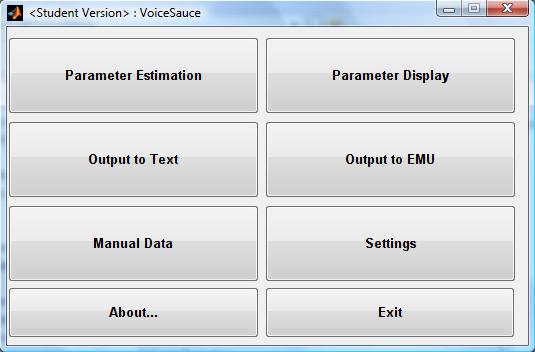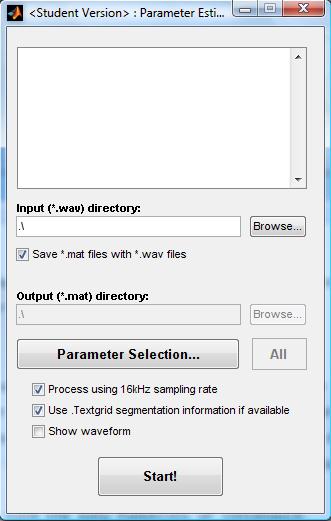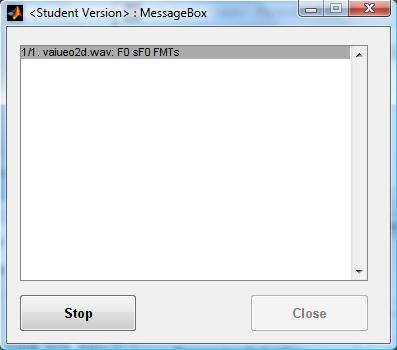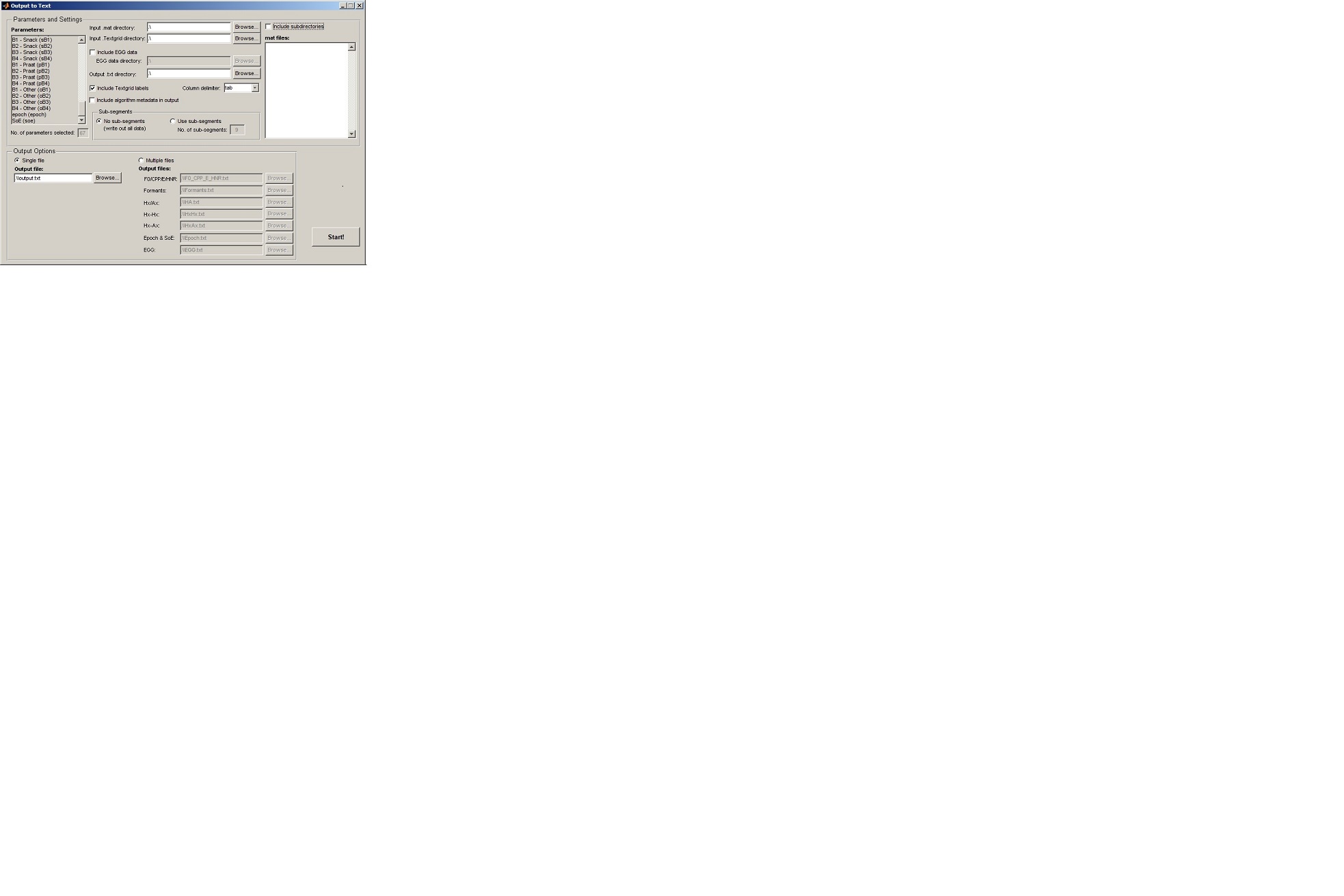|
In the VoiceSauce home screen, click Output to Text. This will open the Output to Text window. This window is divided into two sections: Parameters and Settings and Output Options.
The first step to outputting the measured data is to select which parameters will be written to file. Under Parameters:, click which of the measured parameters to write to text file.
Next, the directory to which the data will be written must be
specified. The file path can be written directly in the field to the
right of Output .txt directory: or located by clicking on the Browse... button.
To write VoiceSauce measurements to txt file, click the Start!
button. This will launch a message box indicating the progress of the
write. As in Parameter Estimation, the write can be stopped at any
point by clicking the Stop button. When the write is complete, click the Close button to exit the message box. Then close the Output to Text window.
At this point, your data has been measured and written to a file that can be analyzed. Close VoiceSauce by clicking the Exit button in the VoiceSauce home screen.
| 


